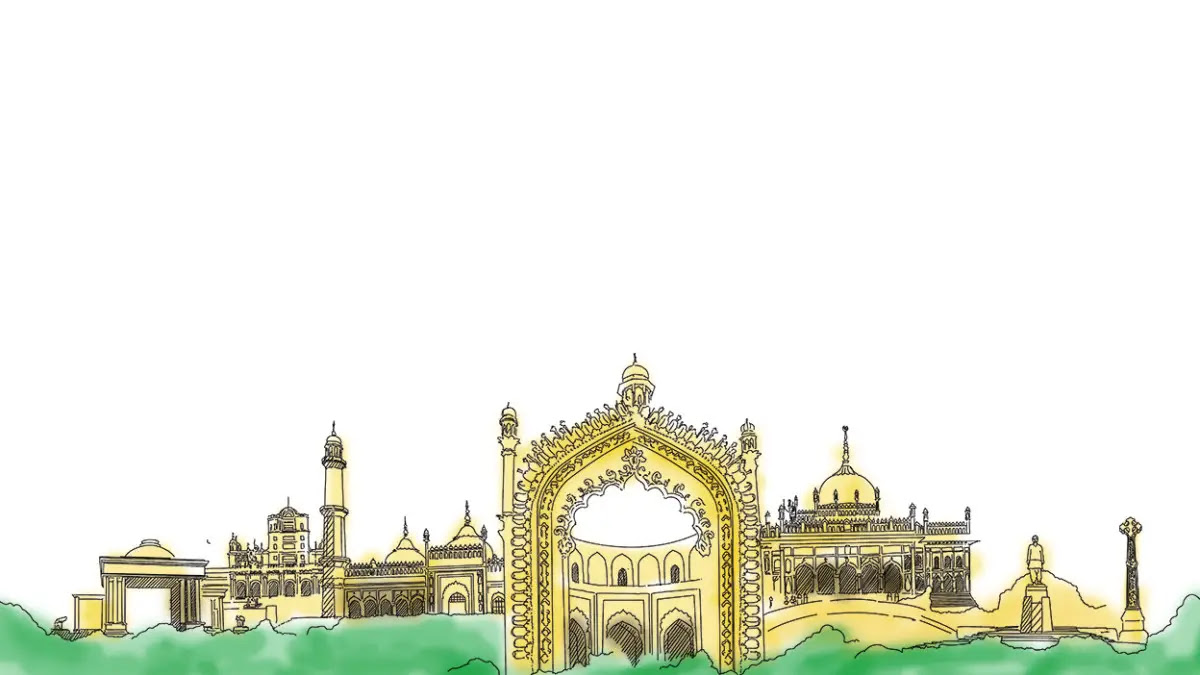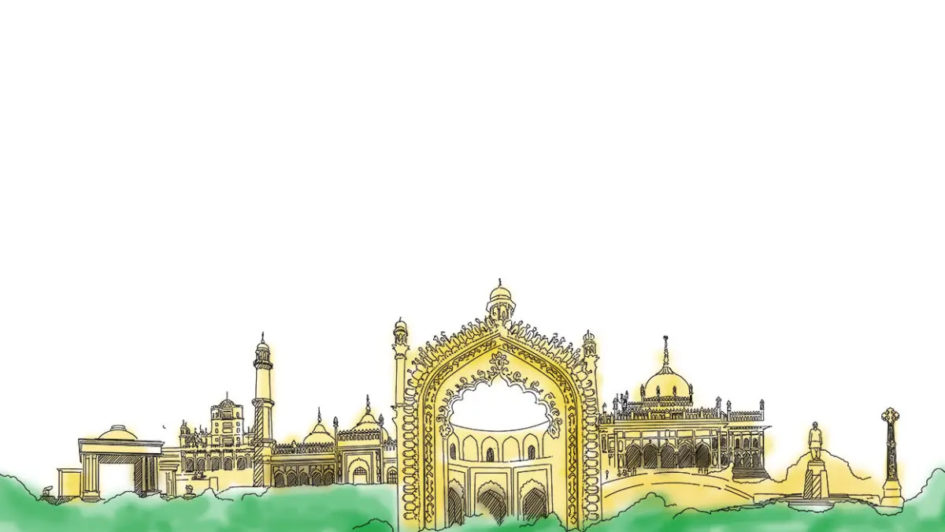Along with Lucknowi mushaira and Ganga-Jamuni tehzeeb, Urdu literature is in decline. And the current socio-political atmosphere can’t escape its share of the blame

Photograph: Shutterstock Sharib Rudaulvi
Several aspects of the literary landscape of Uttar Pradesh have changed in the last few decades, while there are still others that continue to be in the vortex of change. One way of looking at it is that the first half of every century has seen tremendous changes in the arts and literature. For instance, if you look at literary history of the 20th century, you notice how every sphere has been influenced by the Progressive Writers’ Movement. It is thanks to this movement that writers like Rahi Masoom Raza, Ali Sardar Jafri and Kaifi Azmi are still spoken about with reverence.
After the Progressives, there was a brief period in which Urdu writers found themselves inclined towards Modernism. However, it could not benefit the literature it spawned so much. Besides the fact that it could not become popular, it also increased the gap between the reader and the writer. Once they drifted apart, there was a time when writers did some soul-searching on who they were writing for.
Nothing major happened in Urdu literature afterwards. Today, the movement that made literature a receptacle of all spheres of human condition may have waned, but contemporary writing in Urdu still tackles social concerns. There is also a growing consciousness about socio-political changes in the writing of contemporary writers: their pens express those changes in ghazals, novels and stories. And yet, there is something fundamental that has changed.
Today, if we lament the gradual disappearance of Urdu culture, we have to understand that it has its roots in history. Partition cleaved land, but it also cleaved hearts. Its impact on Indian Muslims was tremendous. While some of them opposed Partition and didn’t go to Pakistan, they suffered in the events that unfolded in its aftermath. Several decades after Partition, Urdu has not been able to get the status it should have—neither from the linguistic point of view, nor from its vantage position of being a mother tongue.
The culture of ghazals and mushairas for which several cities of UP, including Lucknow, was famous, had to fade, and it did. The zavaal (decadence) that set on it has not been incidental though: there are reasons for its decline. Today, if there are no poets like Asrarul Haque Majaz, Kaifi or Jafri, then it is clear that things have changed. Today, if there are no short story writers like Rattan Singh or Rajinder Singh Bedi, then it’s evident things are no longer the same. But there is a new crop of writers taking root. They are expressing themselves through fiction and poetry. Are they conscious from a socio-political standpoint? While it may not always be true, today’s writer is a person who carries with him a sense of hurt. After he/she gets bruised by circumstance and his/her hurt accumulates, it often finds an outlet in literature. The experience of pain compels him/her to express himself/herself. There Is A New Crop Of Urdu Writers Taking Root. Are They Socio-Politically Conscious? It Isn’t Universal, But Many Of Them Do Carry A Sense Of Hurt.
Though there have been no poets like Majaz or Kaifi, it doesn’t mean there is an absolute dearth of poets with similar sensibilities or vision for society. There are new poets like Manish Shukla, Khushbir Singh Shaad or Anees Ashfaq (the latter is known more as a short story writer) who have lent a new form and idiom to Urdu poetry. In their poems, they paint life as it is: along with pain, there are strains of protest too, that has seeped into their works. Their political consciousness is unmistakable. Arif Naqvi lives in Berlin but his stories are slices of today’s reality and the dissatisfaction of the writer. Urdu poetry is recording everyday reality. Young or old, Urdu poets share social and humanitarian values. Today’s poets and writers have only begun to write about society and polity. We can’t compare their beginnings with the peaks of Kaifi or Jafri. Perhaps a few decades down the line, they may be even more politically conscious—more fervent in their attempt to bring revolution through their pen. This is a hope that keeps flickering in the hearts of those who love the Urdu language.
In a brief period after the Progressives made literature reflect on people’s ordinary concerns, storytelling came to be mired in ambiguities and symbolism. That period remains cut off from us. If no novel like Rahi Masoom Raza’s Aadha Gaon has been written after it, the reason is that the writers have been caught in the trap of allegories and metaphors, and have not dealt with social changes directly.
Today, whether it is in Lucknow or any other city, the effects of political changes are prominent everywhere. It is true that a writer is not able to write the way he wishes to these days. There are undeclared restrictions on people’s minds which they have to navigate. Many find it hard to say things as they are. It is not just about Lucknow’s tehzeeb (culture) even though that too has been at the receiving end of the bias. When people do not have the facility to choose their mother tongue while receiving education, language will only die away. We can’t expect that people would continue to produce quality literature, or public events like mushairas and kavi sanmelans, would continue to flourish. This change is particularly painful to those who have known and seen Lucknow’s literary scene as it existed once. The ghetto Muslim children learn Arabic, Urdu and Hindi at a madrassaPhotograph: Getty Images
The ghetto Muslim children learn Arabic, Urdu and Hindi at a madrassaPhotograph: Getty Images
The reason many are not free to express themselves is that politics has created an atmosphere in which freedom of expression has suffered. Urdu language is symbolic of the Ganga-Jamuni tehzeeb. But there has been an assault on both the language and the culture, which are on the margins now. It’s a sad fact that is too painful to put in words. Lucknow, for long, was identified with its mushairas, language, culture, buildings like the Imambara, and the lavish dastarkhwan. The spread remains the same, the number of those feasting has grown. But the act of culture has been somewhere lost. Gradually, language too has fallen prey to its challenges and difficulties.
ALSO READ: Interpreter Of Hindustani Maladies
There are many who, during census, get their mother tongue listed as Urdu. But this is not actually true, as thousands of them can’t speak Urdu. At the same time, there are others who speak Urdu, but are bracketed under Hindi as their mother tongue. So, we don’t have the figures and can’t conclude the exact number of Urdu speakers in India today. We can only surmise how bad things are. If Urdu is not being taught in schools, how should we expect literary works like Aadha Gaon to be produced today? Will it not be wrong to hope that the young generation can penetrate the complex social structures with Raza’s finesse, when they have not been taught the intricacies of the language?Language Is At The Root Of Culture, A Beautiful Thing. India Is A Bouquet Of Many Cultures. All Of Them Need Equal Space; One Can’t Get Precedence Over Another.
Unless there is a provision to impart education in Urdu, the deliberations around its role sound hollow. Unless zubaan’s (language) link with zameen (soil), zindagi (life) or bolchal (spoken language) is established, it can’t stay alive.
ALSO READ: Konkani Sunrise: In Search Of The Soul Of Goa
How does the tradition of Urdu protest poetry fare today? I think it is being practiced, but not the way it should have been. One gets a sense that somewhere in the hearts a sense of fear has lodged, which stops the practitioners from expressing themselves freely. Earlier, talks around revolution or social change were written about freely. A poet (Majrooh Sultanpuri) could write:
Aman ka jhandaa is dharti pe
Kisne kaha lahrane na paaye
Ye bhi koi Hitler ka hai chela,
Maar le sathi, jaane na paaye!
Commonwealth ka das hai Nehru
Maar le sathi jaane na paae!
[Whoever said that the flag of peace
Can’t be unfurled on this land
Is it some protégé of Hitler,
Or a mere slave of the Commonwealth?
It’s Nehru, my friends.
Take him by the collar, lest he gets away!]
And still, nothing would happen to him. Protest in poetry thrived since the time of Mughal poet Mirza Muhammad Rafi Sauda, who wrote Shahre Ashob in the classical Urdu tradition, a genre that wove into verses political, social and economic upheavals of the time. In contrast, today’s poets don’t have the courage to take up cudgels. Instead, they resort to allusions. The worst thing that has happened is that Urdu has come to be seen as the language of Muslims. Tamil Muslims speak Tamil. In Karnataka, Muslims speak Kannada. In Bengal, they speak Bangla. If all Muslims spoke Urdu, this would not be the case. Forget Urdu, no language can be linked with religion. If Urdu is the language of Muslims, Gita wouldn’t have been translated into it during the Mughal era. Even after them, Urdu is a language that has figured in the courts and in the written records of the police.
Language should not be discriminated against. It’s at the root of culture, which is a beautiful thing. India is a bouquet of many cultures. Each culture embodies a different beauty. All of them need equal opportunity to grow; one can’t get precedence over another. Unless we learn to do justice to language and stop harbouring hatred against them—no language or culture can survive.
(This appeared in the print edition as “In Search of a Lost Culture”)
(Views expressed are personal)


Leave a Reply